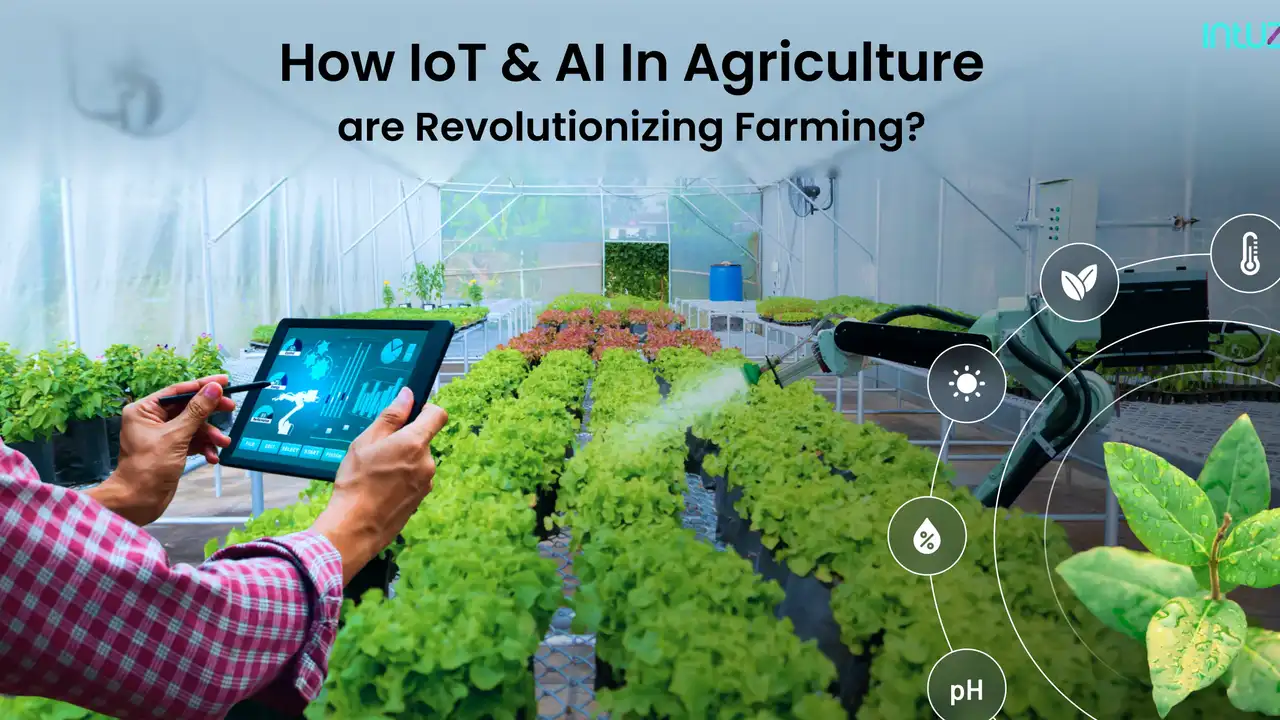AI in Agriculture: Improving Crop Yield and Sustainability
Explore how AI is improving crop yield and promoting sustainable agriculture practices. This article examines AI-powered precision farming techniques. Learn how AI is transforming the agricultural industry.

AI Powered Precision Farming Techniques for Optimized Crop Management
Hey there, future-forward farmers and tech enthusiasts! Let's dive into the exciting world of how Artificial Intelligence (AI) is revolutionizing agriculture, specifically focusing on precision farming. We're talking about boosting crop yields, making farming more sustainable, and even reducing waste. Forget the old ways; AI is planting the seeds for a smarter, greener future.
What is Precision Farming and Why AI?
Precision farming, at its core, is about using technology to make farming more accurate and efficient. Think of it as giving farmers superpowers – the ability to see their fields in incredible detail and make decisions based on real-time data. AI takes this concept to the next level by analyzing vast amounts of data from various sources to provide actionable insights.
Why is this important? Well, traditional farming often involves a one-size-fits-all approach. Fields are treated uniformly, regardless of variations in soil quality, moisture levels, or pest infestations. This can lead to over- or under-use of resources like water, fertilizers, and pesticides, impacting both the environment and the bottom line. AI helps address these inefficiencies.
AI Applications in Agriculture: Boosting Crop Yields with Smart Technology
So, how exactly is AI being used in agriculture? Let's break down some key applications:
AI-Driven Crop Monitoring and Analysis
Imagine having a bird's-eye view of your entire farm, with the ability to zoom in on individual plants and assess their health in real-time. That’s the power of AI-driven crop monitoring. Drones and satellites equipped with high-resolution cameras and sensors capture images of fields, which are then analyzed by AI algorithms. These algorithms can identify signs of stress, disease, or nutrient deficiencies long before they become visible to the naked eye.
For instance, companies like PrecisionHawk offer drone-based solutions that can map fields, assess plant health, and even detect weeds. Their software uses AI to analyze the data and generate reports that farmers can use to make informed decisions. This allows for targeted interventions, such as applying fertilizer only where it's needed or addressing pest infestations before they spread.
Predictive Analytics for Optimal Planting and Harvesting
AI can also predict optimal planting and harvesting times based on historical weather data, soil conditions, and crop characteristics. By analyzing these factors, AI algorithms can determine the best time to plant specific crops to maximize yields. Similarly, they can predict the ideal harvest time to ensure that crops are harvested at their peak ripeness.
Several companies offer predictive analytics solutions for agriculture. Granular, for example, provides a software platform that helps farmers track their operations, manage their finances, and make data-driven decisions about planting and harvesting. Their AI-powered tools can analyze historical data to predict optimal planting dates and harvest times, taking into account factors like weather patterns and soil conditions.
Automated Irrigation Systems with AI-Based Water Management
Water is a precious resource, and AI can help farmers use it more efficiently. AI-powered irrigation systems can monitor soil moisture levels, weather conditions, and plant water needs to automatically adjust watering schedules. This ensures that crops receive the right amount of water at the right time, minimizing waste and maximizing yields.
Companies like CropX offer soil moisture sensors and AI-powered analytics that help farmers optimize their irrigation practices. Their sensors measure soil moisture at different depths, providing real-time data on plant water availability. The AI algorithms then analyze this data to determine the optimal irrigation schedule, taking into account factors like weather forecasts and crop water requirements.
AI-Powered Weed and Pest Control for Reduced Chemical Use
Weeds and pests can wreak havoc on crops, but traditional control methods often involve the widespread use of herbicides and pesticides. AI offers a more targeted approach. AI-powered robots and drones can identify and target weeds and pests with pinpoint accuracy, reducing the need for harmful chemicals.
Blue River Technology, a subsidiary of John Deere, has developed a "See & Spray" technology that uses computer vision and AI to identify weeds in real-time. The system then sprays only the weeds, rather than the entire field, reducing herbicide use by up to 80%. This not only saves farmers money but also minimizes the environmental impact of farming.
Specific Product Recommendations and Comparisons for AI in Agriculture
Okay, let's get down to brass tacks. Here are a few specific product recommendations, along with comparisons and pricing information (keep in mind prices can vary!):
Drone Solutions: PrecisionHawk vs. DJI Agras
PrecisionHawk: Known for its advanced data analytics and reporting capabilities. Ideal for large-scale farming operations that require detailed insights into crop health. Expect to pay anywhere from $15,000 to $30,000 for a complete drone solution, including software and support.
DJI Agras: Primarily focused on spraying applications. Offers a more affordable entry point for farmers who want to automate their spraying operations. Prices range from $10,000 to $20,000, depending on the model and features.
Comparison: If you need comprehensive data analytics and crop monitoring, PrecisionHawk is the better choice. If you're primarily interested in automated spraying, the DJI Agras is a more cost-effective option.
Soil Moisture Sensors: CropX vs. Sentek Drill & Drop
CropX: Offers a user-friendly interface and AI-powered irrigation recommendations. Their sensors are easy to install and maintain. A starter kit with multiple sensors and a subscription to their analytics platform can cost around $5,000 to $10,000 per year.
Sentek Drill & Drop: Known for its robust and reliable sensors that can withstand harsh conditions. Provides detailed soil moisture profiles at different depths. Prices typically range from $3,000 to $7,000 for a set of sensors and data logging equipment.
Comparison: CropX is a good choice if you're looking for a user-friendly solution with AI-powered recommendations. Sentek Drill & Drop is better suited for farmers who need highly accurate and reliable soil moisture data.
AI-Powered Software Platforms: Granular vs. FarmLogs
Granular: A comprehensive farm management platform that integrates data from various sources, including weather, soil, and equipment. Offers AI-powered tools for optimizing planting, harvesting, and irrigation. Pricing varies depending on the size of the farm and the features required, but expect to pay several thousand dollars per year.
FarmLogs: A more streamlined farm management platform that focuses on tracking field activities, managing inventory, and analyzing performance. Offers basic AI-powered tools for predicting yields and optimizing inputs. Pricing is more affordable than Granular, with basic plans starting at a few hundred dollars per year.
Comparison: Granular is a more powerful and comprehensive platform, but it comes at a higher price. FarmLogs is a more affordable option for smaller farms that don't need all the bells and whistles.
Use Cases: How Farmers Are Benefiting from AI in Agriculture
Let's look at some real-world examples of how farmers are using AI to improve their operations:
- Reduced Water Consumption: A vineyard in California used AI-powered irrigation to reduce water consumption by 30% while maintaining the same yield.
- Increased Crop Yields: A corn farmer in Iowa used predictive analytics to optimize planting dates and fertilizer application, resulting in a 15% increase in crop yield.
- Reduced Herbicide Use: A soybean farmer in Illinois used AI-powered weed control to reduce herbicide use by 80%, saving money and minimizing environmental impact.
- Improved Disease Detection: A fruit grower in Washington used drone-based crop monitoring to detect signs of disease early, preventing widespread outbreaks and saving the crop.
The Future of AI in Agriculture: Sustainable Farming Practices and Technological Advancements
The future of AI in agriculture is bright. As AI technology continues to evolve, we can expect to see even more innovative applications that help farmers improve their efficiency, reduce their environmental impact, and increase their profitability. We're talking about smarter robots, more accurate sensors, and even more powerful AI algorithms that can analyze vast amounts of data to provide actionable insights.
One exciting area of development is the use of AI to promote sustainable farming practices. AI can help farmers optimize their use of resources, such as water, fertilizer, and pesticides, reducing waste and minimizing environmental impact. It can also help farmers implement conservation tillage practices, which reduce soil erosion and improve soil health.
Another promising area is the development of AI-powered tools for predicting and mitigating the effects of climate change on agriculture. AI can analyze weather data, soil conditions, and crop characteristics to predict the impact of climate change on crop yields and help farmers adapt their practices accordingly.
So, there you have it! AI is not just a buzzword; it's a game-changer for agriculture. By embracing these technologies, farmers can create a more sustainable and productive future for themselves and for the planet.
:max_bytes(150000):strip_icc()/277019-baked-pork-chops-with-cream-of-mushroom-soup-DDMFS-beauty-4x3-BG-7505-5762b731cf30447d9cbbbbbf387beafa.jpg)






